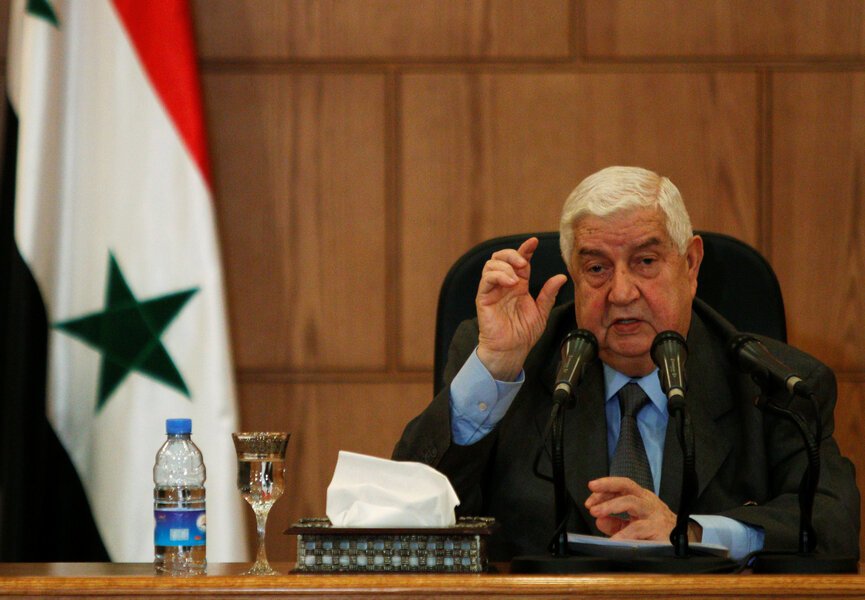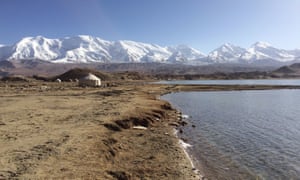
When the Chinese president, Xi Jinping, unveiled what some call the most ambitious development plan in history, Zhou Jun decided almost immediately he should head for the hills.
The 45-year-old entrepreneur packed his bags and set off for one of his country’s most staggeringly beautiful corners: a sleepy, high-altitude border outpost called Tashkurgan that – at almost 5,000km (3,100 miles) from Beijing – is the most westerly settlement in China.
“I saw a great opportunity to turn this little town into a mid-sized city,” Zhou explained during a tour of ‘Europa Manor’, a garish roadside spa he recently opened for Chinese tourists along the Karakoram, the legendary 1,300km highway that snakes through China’s rugged western mountains towards the 4,700m-high Khunjerab Pass.
Zhou said he was part of a wave of entrepreneurs now pouring into this isolated frontier near Pakistan, Afghanistan and Tajikistan, hoping to cash in on President Xi’s “Belt and Road initiative”, a multi-billion dollar infrastructure campaign that looks set to transform large swaths of Asia and the world beyond.
“This place is going to see big changes,” predicted Zhou, who hails from the central city of Xi’an, as he guided his visitors through an R&R centre filled with plunge pools, wicker chaise lounges and fake plastic trees.
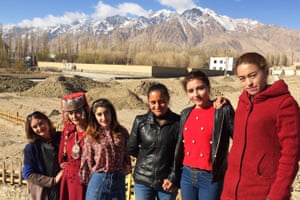
This weekend world leaders including Russian president Vladimir Putin, Pakistani prime minister Nawaz Sharif and Turkish president Recep Tayyip Erdoğan will gather in Beijing to celebrate Xi’s plan, which supporters hail as the start of a new era of globalisation but sceptics see as a strategic ploy to cement China’s position as Asia’s top dog.
“The Belt and Road forum will go down as a landmark event in the history of Chinese foreign policy,” boasted a frontpage commentary in the Communist party’s official mouthpiece, the People’s Daily, on the eve of the event, which bears the unfortunate English acronym “Barf”.
As the last stop on the Karakoram before the border with Pakistan, Tashkurgan stands on the front line of one of the most ambitious components of Xi’s project: the $62bn China-Pakistan economic corridor (Cpec).
Officials in Beijing and Islamabad claim the corridor – a vast web of planned infrastructure projects running diagonally from the resource-rich region of Xinjiang in western China to the deep-water port of Gwadar on Pakistan’s Arabian coast – will spark an “economic revolution” in the south Asian country.
The jaw-dropping landscape of glaciers and grasslands around Tashkurgan, an ancient Silk Road trading hub that is home to China’s Tajik ethnic minority, has changed little in hundreds, if not thousands, of years. “It is worth a journey from England merely to see this place,” the British adventurer Robert Shaw marvelledafter trekking through the region’s “stupendous peaks” in the late 1860s.

But this obscure and secluded town is now bracing for a revolution of its own, as authorities cook up grand plans to transform it and the surrounding region.
In order to ferry people and equipment into this far-flung outpost, which is seven hours’ drive from the nearest major city, one of China’s highest altitude airports is being built just south of town on the Pamir plateau, a sparsely inhabited region previously the preserve of farmers, nomads and yaks.
Construction teams on both sides of the border have been rebuilding some of the most treacherous stretches of the Karakoram, the world’s highest transnational highway and a project that took two decades and more than 1,000 lives to build.
Further ahead, there are spectacular plans to build the so-called Khunjerab railway, a high-altitude line that would run roughly alongside the Karakoram and link north-eastern Pakistan with the Chinese city of Kashgar.
Such proposals are music to the ears of fortune-seekers such as Zhou who have flocked to this landlocked town to open improbably named businesses such as the Sea Front International Hotel.
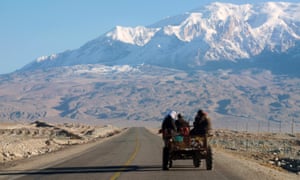
“The next 10 years are going to bring tremendous change,” Zhou boasted. He claimed, with a heavy dose of hyperbole, that the town’s future might resemble that of skyscraper-studded mega-cities such as Shanghai and Guangzhou.
Muzaffar Shah, a Pakistani salesman who was passing through the Chinese city on his way back from a shopping expedition to the bazaars of Kashgar, said he also sensed change was coming.
Shah remembered his first trip to Tashkurgan, in 1993, when “it was nothing”. “This is growing very fast [now] – very, very fast,” he added over a plate of yak curry by the Karakoram, which Chinese travellers call the China-Pakistan Friendship Highway. “Everything has changed.”
Over the coming years Tashkurgan is unlikely to be the only place to feel the effects of China’s infrastructure crusade, which some compare to America’s post-war Marshall plan to rebuild Europe.
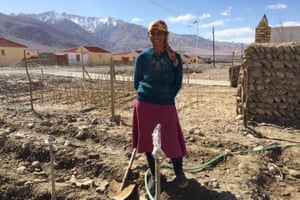
new home on the outskirts of Tashkurgan. Photograph: Tom Phillips for the Guardian
From Mongolia to Malaysia, Thailand to Turkmenistan and Indonesia to Iran, a slew of Chinese projects, including power plants, solar farms, motorways, bridges, ports and high-speed rail links, are set to be built with support from China’s banks and work force.
According to some estimates, China will bankroll some $150bn of infrastructure projects each year in countries that embrace Xi’s signature foreign policy initiative.
Tom Miller, the author of a recent book about Xi’s Asian infrastructure blitz, said the Belt and Road schemes were part of a vast wave of Chinese capital that was now “washing over the world”.
So many economic and geo-political goals lay behind the program that it defied one simple definition but essentially it was Xi’s answer to Donald Trump’s #MAGA: “Let’s Make China Great Again”.
“It is part of a push to cement China’s position as the undisputed power of Asia,” he said.
“China’s greatest strengths are financial – it has enormous economic muscle – and building infrastructure. So it is putting those things together and using its economic diplomacy to build roads, railways, ports, powerlines [that will help] integrate Asia [and] puts China at the centre of Asia.”
“It is very significant because China is the only country that has the capacity to build infrastructure like this and the only country that is willing to do it,” Miller added.
“You can be very sceptical about what the Belt and Road itself means … but nobody doubts that China is lending a lot of money and building a lot of stuff.”
The winds of change have already been blowing in Tashkurgan and affecting its 40,000-strong population.
Physically and culturally, the town, which is the main home of the Sarikoli-speaking Tajik minority, is about as far from Beijing as you can get, without crossing China’s 22,000km border.
An exhibit at the local government museum, the Tajik Folk Culture Exhibition Hall, describes its natives as having “typical features of Caucasian race, with light skin coloration, golden yellow or dark brown hair, dark blue or gray brown eyes, thin lip, high nose, not high cheekbone, developed body hair and beard.”
Slowly, however, the make-up of the population is changing. Locals say the last decade has seen a major influx of Mandarin-speaking immigrants from China’s ethnic Han majority after the government began trying to boost the local economy by turning the picturesque border town into a tourist destination.
Those efforts intensified following an outbreak of deadly ethnic rioting in Xinjiang’s capital, Urumqi, in 2009 as authorities began pushing for a burst of “leapfrog” economic development that might calm the province’s violence-hit south.
Miller said one of the Belt and Road initiative’s key aims was to bring development and stability to China’s deprived periphery by linking such regions with overseas markets.
“Particularly in Xinjiang, China believes that economic development can help solve some of the security questions with its own militant Muslim minority and Islamist problems over the borders. They think that if you give people jobs and economic hope then perhaps they will be less inclined to foment insurgencies and other things,” he said.
“I think they are mistaken there … but that is how they think,” Miller added.
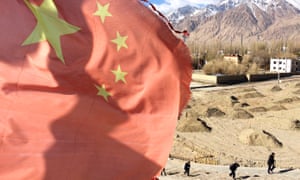
The ever-present security forces on Tashkurgan’s otherwise tranquil streets give it the feel of an Alpine resort crossed with the West Bank and public expressions of dissent are rare.
Asked how they felt about the town’s future, locals firmly stuck to the party line and said they were hopeful Xi’s project would inject new life into the area.
“We fully support the Belt and Road initiative,” beamed Narzi Baygim, a 23-year-old Tajik tour guide who said she hoped it would bring more tourists to the region. “I think it will help connect China to other countries and to promote friendship.”
Rebiya, a 22-year-old interpreter, said she was glad to have been born and raised in such a scenic and pristine corner of China. “Living here is like living in heaven,” she said.
But development was welcome, she said, shrugging off the suggestion that Tajik traditions might be diluted by the influx of outsiders.
“[Our culture] has been passed down over the past 2,000 years and has become part of our DNA,” she said. “I don’t think it will vanish just because of economic development.”
While business people are banking on the transformation of the region around Tashkurgan, not everyone is convinced the reality will live up to Xi’s grand vision. Some point out that since the Belt and Road initiative began in 2013 trade between Xinjiang and foreign countries has actually fallen.
Rahber Khan, the owner of a Pakistani restaurant near the town’s main square, said he feared most Chinese investment was destined for the strategic port of Gwadar, not the impoverished region where his family lived.
“Maybe in the future we are growing but right now we don’t see anything good in front of us,” said Khan, 39, who is originally from Ghulkin, a village just over the border.
“I’m not sure if it’s coming or not,” he said of plans to connect Pakistan and China with the Khunjerab railway, adding: “It’s just talking.”
Before this weekend’s summit in Beijing, China has trumpeted its commitment to the “game-changing” initiative in a barrage of state-sponsored propaganda.
“At a time when certain western powers are retreating into protectionism and isolation, China has been promoting the globalisation of the economy in a spirit of openness and inclusiveness,” the official news agency Xinhua declared.
The English-language China Daily newspaper described the drive as “one of the most important public goods China offers the world”.
Outside Khan’s restaurant, the Communist party has also set out its stall, stamping its message onto a giant red billboard that towers over Tashkurgan’s main square.
“Build a beautiful Xinjiang!” the sign reads. “Make a Chinese dream come true!”
Additional reporting by Wang Zhen
[“source-theguardian”]


